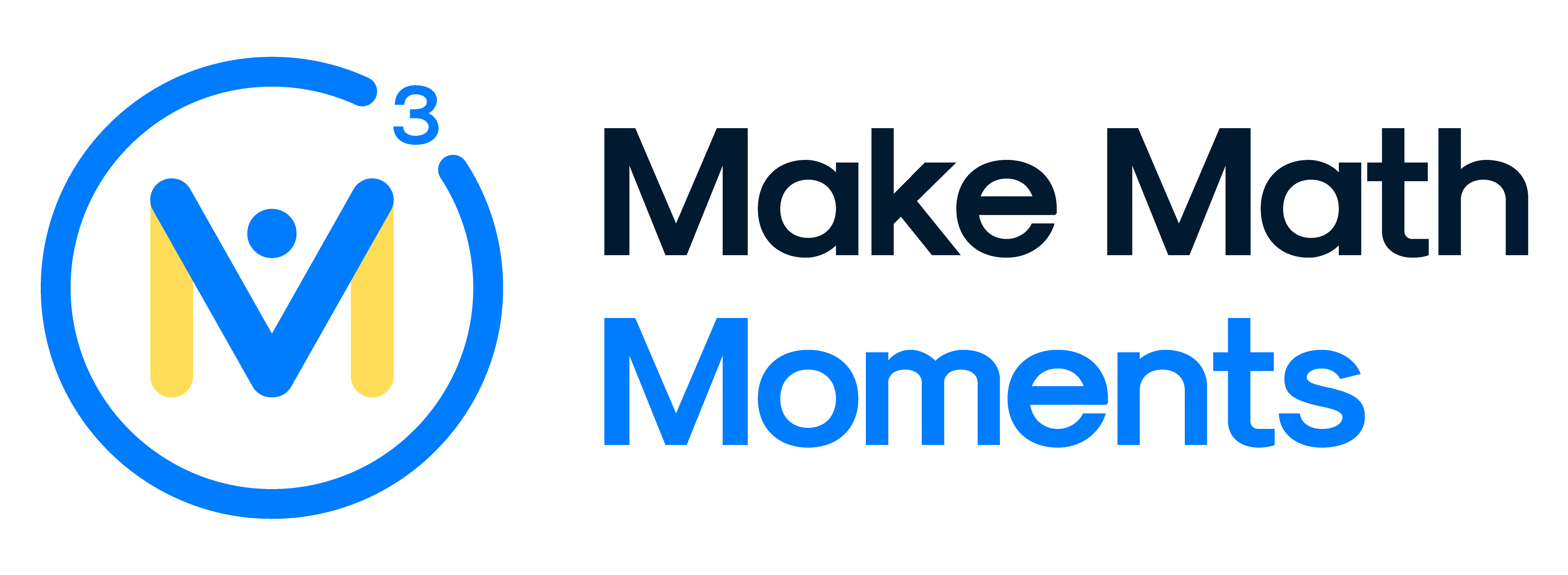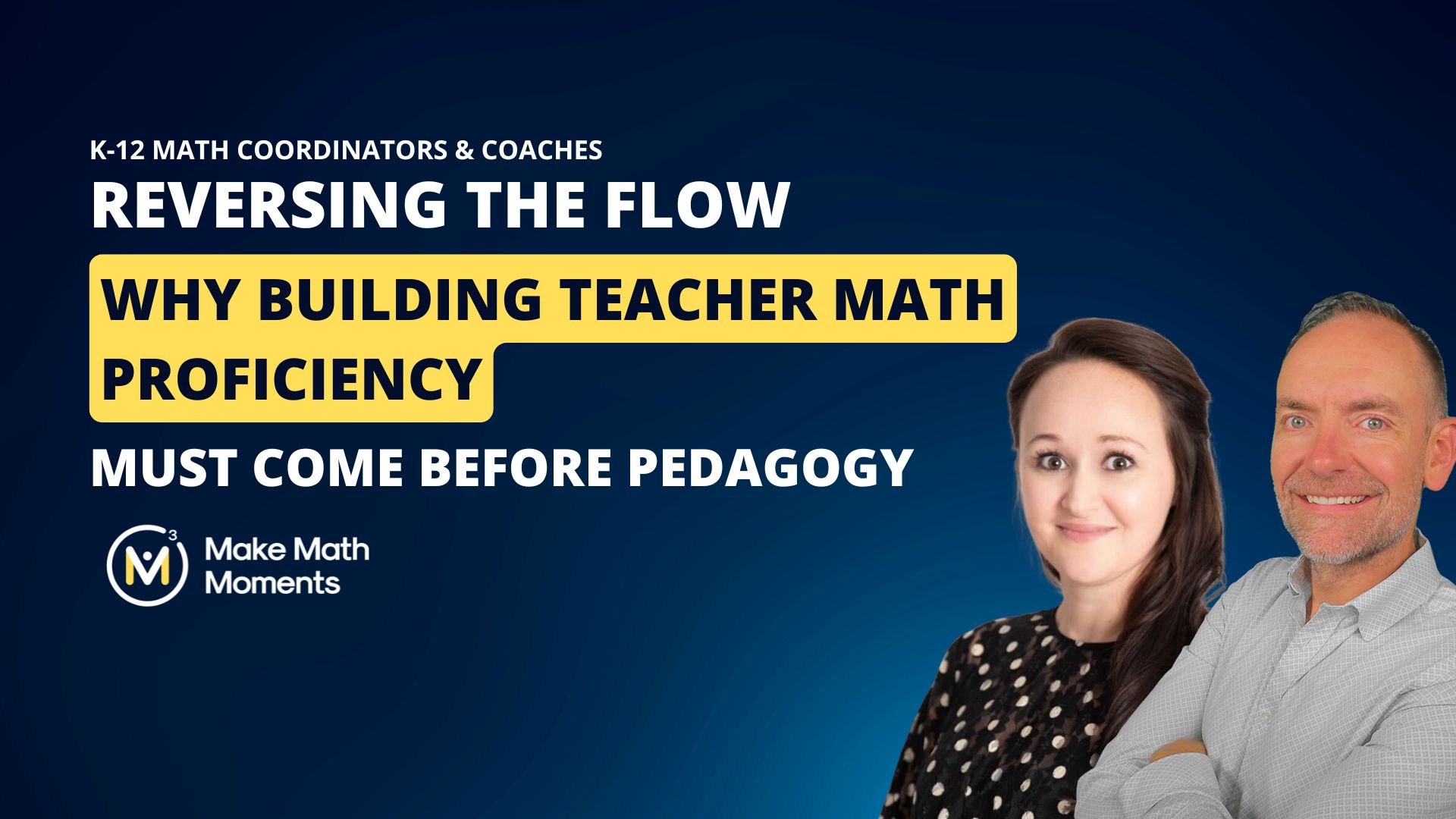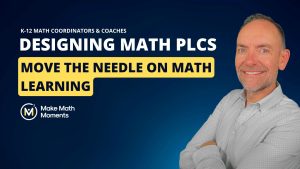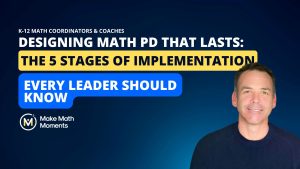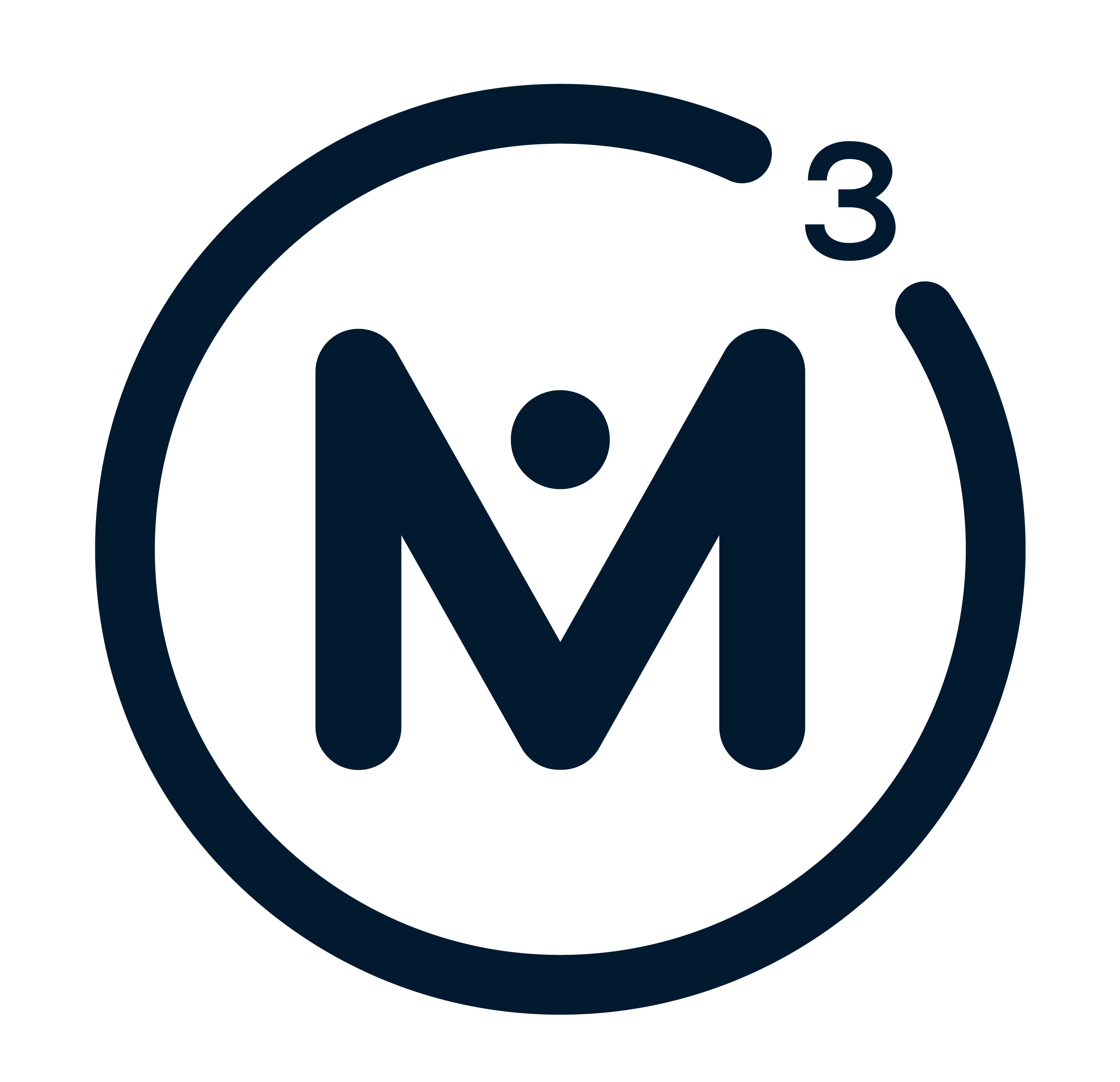In many school districts, professional learning time is a precious resource—scheduled sparingly, fought for fiercely, and often consumed entirely by conversations about instructional strategies, pedagogical tools, and classroom management. These are important topics, no doubt. But what if we’ve been using this collaborative time backwards?
What if the foundational layer we’ve neglected isn’t about how to teach—but what we teach?
In this chapter, we explore one of the most overlooked barriers to math improvement: a system-wide underinvestment in teachers’ mathematical proficiency. We challenge K–12 math leaders to reflect on whether their current use of PLC time, coaching support, and PD sessions is truly building teacher capacity—or simply rearranging the scaffolding without strengthening the foundation.
The Backwards Support Problem
We often call this issue “backwards support” for a reason: we’ve reversed the natural learning sequence.
Students don’t begin their math journey by teaching others—they begin by learning content. They develop fluency, flexibility, and conceptual understanding. Only then are they expected to explain, justify, and teach peers.
Yet in professional learning, we ask teachers to do the opposite.
We spend the majority of our time helping them fine-tune their questioning strategies, implement instructional routines, and differentiate practice—before we’ve ensured they themselves have deep, confident command of the math content they’re teaching.
This isn’t a criticism of teachers. It’s a system design problem.
Most teachers didn’t enter the profession with deep, flexible understanding of K–12 mathematics. Many were never taught math conceptually themselves. And yet, we’ve built our entire improvement model on the assumption that pedagogical tools alone will move the needle.
They won’t—unless we invest first in what Shulman (1986) calls content knowledge and pedagogical content knowledge (PCK). Without these, even the best instructional moves fall flat.
What the Research Tells Us
Research has long confirmed that teacher content knowledge is a critical driver of student achievement in mathematics.
In a widely cited study, Hill, Rowan, and Ball (2005) found that teachers’ mathematical knowledge for teaching (MKT) was significantly correlated with student gains in math. In fact, teachers with stronger MKT produced greater growth, even after accounting for student demographics and prior achievement.
“Improving teachers’ mathematical knowledge may be one of the most direct ways to improve student outcomes.”
— Hill, Rowan, & Ball, American Educational Research Journal, 2005
Other studies affirm this. For example, Ma (1999) contrasted U.S. and Chinese elementary teachers and found that those with profound understanding of fundamental mathematics (PUFM) were more likely to sequence lessons effectively, use representations flexibly, and anticipate student misconceptions.
This research challenges the common PD pattern of emphasizing pedagogy at the expense of content.
Why We’ve Defaulted to Pedagogy
Let’s be honest: pedagogy feels more accessible. Facilitating a session on questioning techniques, number talks, or visual models doesn’t always require confronting content gaps. It’s easier to lead a PD on strategies than to slow down and ask: Do we understand this math deeply ourselves?
Additionally, many district math leaders—especially those promoted from teaching roles—haven’t had opportunities themselves to build adult-level math fluency. The professional learning culture we’ve created often assumes content understanding instead of nurturing it.
And here’s the trap: sometimes we support teachers pedagogically and still get what appears to be a strong math teacher. So we double down on pedagogy, assuming that’s the cause. But the truth might be more complicated.
Strong teachers have both Mathematical Knowledge for Teaching (MKT) and strong Profound Understanding of Fundamental Mathematics (PUFM)… But we’ve been operating under the assumption that what’s missing in order to build strong teachers is pedagogy.
The negative reinforcement we get is this: occasionally, when we focus on pedagogy first, we do get a strong teacher—but likely, what actually happened is that teacher went down the rabbit hole on their own. They developed strong strategies, internal models, and mathematical insight through personal study and struggle.
But flip the script—when you focus on math understanding first and give a teacher a mathematical epiphany—an idea that shifts what they thought they knew—you spark something deeper. It could be a realization like ‘there are two types of division and it matters when and how we use them.’ It’s the kind of insight you can’t unlearn. And when that happens, the very next question teachers ask is, ‘How do I teach this to my students?’
Boom. The teacher is now asking for the pedagogy. When you start with epiphanies, pedagogy follows. But the reverse is not always true.
This insight is a cornerstone of what we call backwards support—not because it’s intentionally wrong, but because the sequence we’ve internalized is out of order. Pedagogy-first approaches can inspire short-term shifts. But content-first learning—epiphany-first learning—produces the kind of durable transformation that reorients a teacher’s entire instructional stance.
When a teacher experiences a genuine math epiphany, their relationship to content shifts. Confidence rises. Curiosity grows. And suddenly, professional learning isn’t about compliance—it’s about capacity.
Rethinking Collaborative Time: From Strategy to Substance
If you’re a K–12 math coordinator, it’s time to ask a hard question:
Are we spending the bulk of our collaborative time supporting how to teach before addressing what we’re teaching?
And if so, what would it look like to flip the script?
Imagine your coaching cycles, PLC sessions, and pull-out PD time focused first on doing math—together.
- Working rich tasks as adult learners
- Analyzing multiple representations of a single concept
- Discussing models and strategies across grade bands
- Surfacing misconceptions and resolving confusion with colleagues
This isn’t abstract. In our work across dozens of districts, we’ve seen the impact when math leaders prioritize teacher content growth first. The results are profound:
- Teachers gain confidence to lead math talks without scripted questions
- Grade-level teams begin identifying coherence across concepts
- Classroom discourse becomes more authentic—not just structured, but mathematically rich
Why This Matters in Stage 3: Building Capacity
Stage 3 of our improvement framework is about nurturing the internal strength and sustainability of your system—not just refining frameworks, but growing the people who bring them to life.
If a teacher’s classroom is a tree, then their mathematical understanding is the roots.
When those roots are shallow—when teachers lack deep mathematical content knowledge—everything above the surface is at risk. You can add new tools, curriculum resources, and instructional strategies (the branches and leaves), but without strong roots, the tree cannot thrive. It becomes fragile—susceptible to stress, confusion, and collapse when new expectations are introduced.
Too often, we rush to build branches (pedagogy) before ensuring the roots are strong and stable. But sustainable growth begins below the surface. Deepening teachers’ mathematical understanding nourishes every other part of instruction. It grounds decisions, strengthens confidence, and helps new practices take hold.
It’s time to treat mathematical content knowledge not as a bonus, but as the root system that makes everything else possible.
The “Backwards Support” Fix: Five Actionable Moves
- Open Every PD With Math, Not Slides
Start sessions with a math task that teachers experience as learners. Shift the tone from passive listening to active thinking. - Create Vertical Math Labs
Invite teachers from different grade bands to work through a concept together (e.g., multiplication, fractions, functions). Let the math drive the dialogue. - Reframe PLC Protocols
Encourage teams to analyze student work and teacher content decisions. What math understanding did the teacher need to support that work? - Dedicate Coaching Time to Content Growth
In coaching cycles, don’t just plan lessons. Spend time deepening content knowledge tied to the upcoming unit. - Model Vulnerability and Inquiry as Leaders
Leaders should model what it looks like to ask, “Why does this work?” or “Is there another way to represent this?” Normalize content learning as part of professionalism.
Building Capacity the Right Way Around
We’ll say it plainly: We’ve been supporting backwards.
We’ve invested heavily in pedagogy without ensuring the foundation is solid. And we’ve treated teacher content growth as optional, occasional, or assumed.
It’s time to re-center mathematical proficiency at the heart of capacity building. This isn’t about doing less with pedagogy—it’s about making sure our pedagogy is rooted in real understanding.
Content first. Then pedagogy. That’s the forward way.
References
Hill, H. C., Rowan, B., & Ball, D. L. (2005). “Effects of teachers’ mathematical knowledge for teaching on student achievement.” American Educational Research Journal, 42(2), 371–406.
Ma, L. (1999). Knowing and Teaching Elementary Mathematics: Teachers’ Understanding of Fundamental Mathematics in China and the United States. Mahwah, NJ: Lawrence Erlbaum Associates.
Shulman, L. S. (1986). “Those who understand: Knowledge growth in teaching.” Educational Researcher, 15(2), 4–14.
